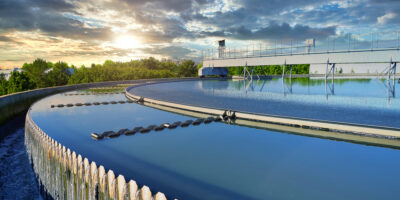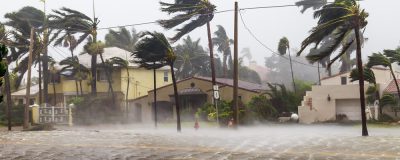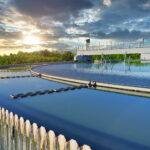As wastewater treatment plant operations are becoming increasingly complex, plant managers and operators face the challenge of ensuring compliance and efficient performance across a range of indicators. The balancing act of maintaining high-efficiency standards in areas such as effluent quality, energy consumption, carbon footprint and OPEX has made the adoption of advanced digital tools a necessity for fast and reliable decision-making.
Digital twins are rapidly emerging as a game-changer in the wastewater treatment sector. These virtual replicas of physical systems provide a real-time, data-driven representation of wastewater treatment plant (WWTP) processes, enabling operators to gain insights and make informed decisions in a complex operational and regulatory landscape.
The increasingly complex requirements for wastewater treatment Environmental requirements of wastewater treatment plants are increasing and are likely to increase over coming decades. As an example, the EU recently announced an upcoming extension of the existing wastewater directive. By 2045, member states must ensure the application of quaternary treatment (i.e., for the removal of micropollutants). Furthermore, wastewater treatment plants must live up to an energy neutrality target, meaning that ‘by 2045 urban wastewater treatment plants will have to produce the energy they consume, with progressive intermediate targets. This energy can be produced on or off-site, and up to 35% of energy can be purchased from external sources.’ (Source: https://www.consilium.europa.eu/en/press/press-releases/2024/01/29/urban-wastewater-council-and-parliament-reach-a-deal-on-new-rules-for-more-efficient-treatment-and-monitoring/).
And the capabilities of these digital twins continue to evolve. One example is the recent introduction of the Optimised Plant module that is part of DHI’s TwinPlant. This module addresses the intricacies of aeration systems within wastewater treatment plants, offering operators data-backed advice on optimal settings to minimise energy consumption, reduce carbon footprint and lower operational costs. Previous research from DHI suggests that ‘energy optimisation of WWTPs can reduce the total CO2e emissions from the global wastewater treatment sector by up to 20%, while providing cost savings of 24 billion EUR per year.’ The aeration process can account for up to 60% of energy consumption in wastewater treatment, so major savings can be harvested by improving the aeration process alone.
How to optimise the aeration process for reduced energy consumption
The Optimised Plant is a cloud-based application that optimises the aeration controllers in WWTPs. Building on TwinPlant’s digital twin capabilities, it uses real-time sensor and forecast data and a process model to automatically determine optimal controller settings. By optimising the aeration process through continuous fine-tuning of set-points and PID settings, operators can reduce the power consumption of blowers up to 30%, which alone can reduce the overall power consumption of a WWTP up to 20%, drastically reducing costs as well as carbon footprint. For a medium-sized WWTP, the Optimised Plant can potentially reduce emissions by up to 100 t CO2 per year.
Digital solutions will play an increasingly critical role in helping WWTPs reach targets on efficiency and energy neutrality in the future. And digital twins will be an indispensable part of this future.









Leave a Reply